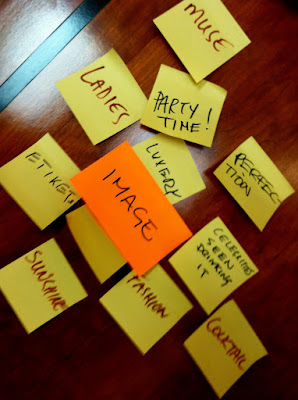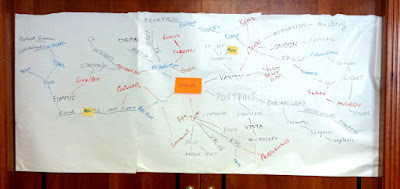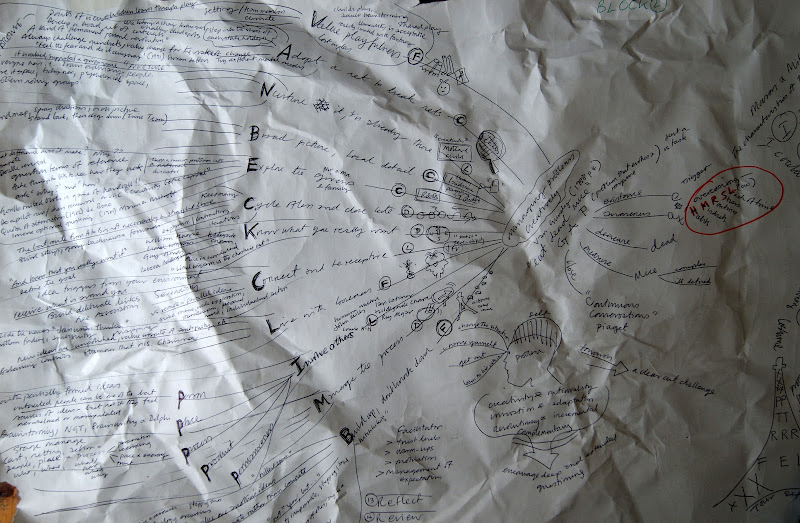
B822 Techniques Library : Random Stimuli of Various Kinds
1) Identify what it is you want ideas for.
2) Grab an idea from a paper, from looking out of the window, or by throwing dice. (In our case the facilitator had a collection of odd items for this purpose).
3) Connect this idea back to the issue, if necessary using Free Association or Excursion.
4) If it doesn't work try something else.
Could pick a fixed or specific element of the problem and do the same.
* Select grammatically appropriate stimuli: noun+verb, adjective+noun, but make bizarre combinations (which is how David Bowie often wrote song lyrics).
* Deliberately do something different, or speak to someone new or travel home in a different way.
* Allow the idea to incubate while going about your normal day.
CASE STUDY
We took a business problem and defined this in a way that was clear.
WRITTEN UP ON FLIP CHART
Various items were picked out from a selection brought to the workshop by the tutor for this purpose. He picked out a small, smiling lobster ornament as the stimuli and passed it around. We then played collective word association writing our word onto a PostIt note that the facilitator then put onto a set of double doors.
Once we had around 70 ideas and we had fairly exhausted our thoughts we stopped.
The role of the facilitator was to ensure that everyone offered ideas, that no one dominated. Collectively we put the words into groups and labelled these groups.

We took ONE theme and put it on a triple A1 sheet of paper.

We drew, collectively, a mind map still trying to generate ideas.
Finally, from these ideas the person whose problem it had been was invited to see if any answers had been offered.
The solution that was of most interest was indeed something that would not otherwise been thought of.
REFERENCE
Whiting (1958), Taylor (1962), de Bono (1970), Rickards (1974) and VanGundy

